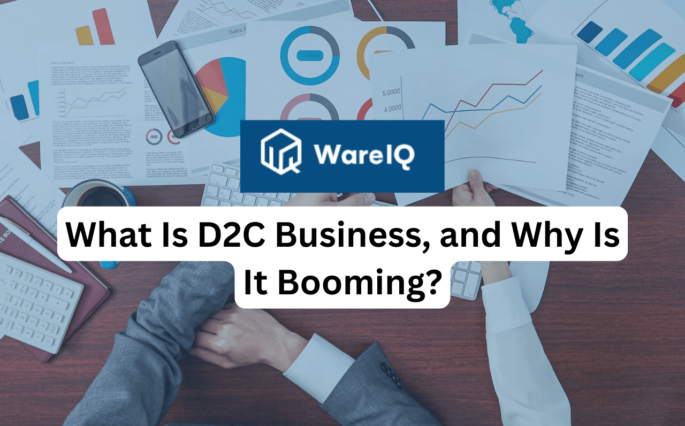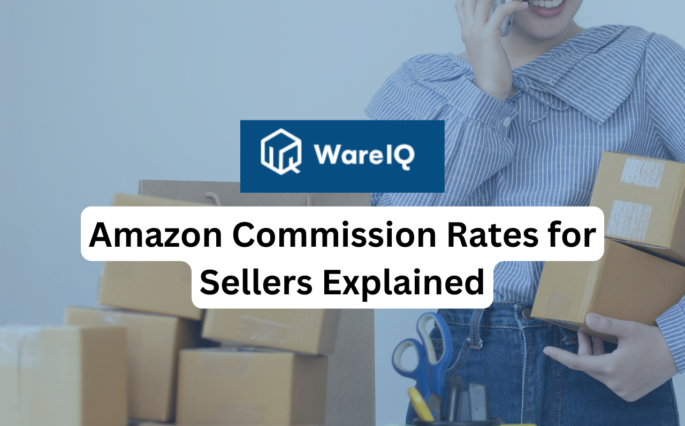Retail Supply Chain Management: Strategies to Optimize Operations and Drive Growth

Globally, 79% of companies affirm that optimising retail supply chain operations leads to a substantial increase in revenue. In the era of Amazon, an efficient supply chain not only ensures satisfied shoppers but also contributes to enhanced revenues by prioritising customer experience.
Supply chain optimization increases efficiency, cost-effectiveness, and operational performance. Done well, it creates a competitive advantage by placing your company ahead. In this blog post, we will examine best practices, challenges, and possible retail supply chain management solutions.
What is Retail Supply Chain
Retail Supply Chain Management looks after the entire process of procurement and distribution of their products. It includes many tasks. These include storing products and managing stock. Retailers also buy goods, handle orders, and partner with carriers. They also include other related activities.
What sets it apart from other supply chain processes is the high product volume and the fast product circulation in retail.
For example, a store wants to sell a pair of shoes. The store asks the supplier to send them some stocks. Once the shoes arrive, the store puts them on its shelves. When a person wants to buy shoes, they go to the store and buy them. All these are part of the retail supply chain.
Related read: What are Retail Operations?

Strategies for Retail Supply Chain Management
Outsourcing
To optimise your retail supply chain management, explore outsourcing specific functions. Trying to handle every aspect in-house can hurt productivity. This is especially true for large businesses. For example, warehousing can become impractical for scaling businesses.
Outsourcing tasks can improve your supply chain such as procurement, warehousing, and logistics. It can even help with customer service. Outsourcing software services also helps small-scale businesses automate tasks.
Communication With Suppliers
Effective communication is a pivotal element in retail supply chain management. Establishing clear and transparent channels between the retailer and the suppliers is paramount. This ensures the timely fulfilment of demand and mitigates the risk of confusion.
Pick a channel—text, virtual meetings, trade shows, or social media—and plan and personalise communication. Interpersonal relationships come in handy in a number of instances, such as during restocking. Particularly when dealing with multiple suppliers, fostering strong and active communication with each becomes even more vital to upholding a seamless operational flow.
Use of Mobile and Internet
Retailers can harness the power of mobile technology for effective marketing, direct sales, and information dissemination. While WhatsApp has revolutionised the space, SMS is still the quickest way to keep everyone in the supply chain informed.
When it comes to the internet, the power of email has immense benefits in retail supply chain management. Then, there is social media, which provides a platform for both retailers and customers to discern trends and take proactive measures. Retailers can utilise these technologies to provide location-based discounts and services, thereby enhancing sales opportunities, not to mention the AI-powered customer services thriving in the space.
Centralised Management Software
Achieving an optimised supply chain process necessitates the seamless collaboration of all business components. Yet, without the help of digital technologies and automation, that is not totally possible. Numerous management software solutions exist, such as Oracle SCM, SAP SCM, Logility, etc. The most sophisticated software accomplishes to integrate a business’s diverse departments, fostering effective coordination. For example, the synergy between sales, inventory, and finance systems.
By centralising relevant data in a shared database accessible to all systems, these software tools streamline various business processes. Most software today features cloud capabilities, though. The integration, in turn, facilitates a more cohesive and efficient operation.
Multichannel Approach for Demand and Supply
Employ a multi-strategy to construct an agile retail supply chain. The goal is to build a supply chain that can quickly adapt to changing demands and efficiently manage inventory. It involves diversifying the channels to source, distribute, and sell products, including marketplaces, and channels through which the business interacts with suppliers and customers.
When providing multiple service channels, offer special delivery choices such as fast or timed deliveries. Additionally, provide real-time order status updates.
Efficient inventory management is also paramount for successful eCommerce operations. It keeps track of stock levels and ensures the right products are always available. However, channel integration is the key, while every channel works independently. Adopting a multichannel approach aids in immediate supplier communication. It also facilitates proactive business planning and forecast accuracy in emerging trends.
Focus on High-Quality Products
Enhancing your retail supply chain management involves securing high-quality products at affordable prices. Therefore, retailers must thoroughly understand their manufacturer or supplier and identify their strengths and limitations to make an informed decision.
Explore various options until you discover the supplier or manufacturer that aligns with your business requirements. Develop a comprehensive proposal. Solicit quotes and information from several potential suppliers or manufacturers until the perfect fit is identified.
As mentioned, maintaining active communication also helps here. Interpersonal relationships go a long way in negotiating future prices. Supplies might be willing to enable procurement at much lower costs.
Pre-planning
Strategic planning plays a pivotal role in ensuring punctual order fulfilment and avoiding disruptions in your logistics chain. Invest in order fulfilment software. Already, last-mile delivery challenges obstruct the way. Also, planning ensures timely restocking or informing customers in case of delays or stockouts
Swift order processing doesn’t necessarily require expensive shipping or air deliveries. However, without proper planning, costs can escalate rapidly. For example, surcharges are a common occurrence in logistics for immediate deliveries. Anticipate future needs to establish effective inventory management and optimise order fulfilment processes.
Understand Customers
Understanding your customers’ preferences and the timing of their needs enables you to anticipate future trends and maintain optimal stock levels. Proven strategies like customer surveys, social media interactions, and event organisation help. Of course, there are tech-enabled insights from predictive analytics and data analytics.
Utilise sales data analysis to identify future demands and emerging trends. Effectively convey this information to your supplier(s). This is particularly important when faced with sudden demand surges. It is a proactive approach to enhance inventory management, ensuring that your stock aligns seamlessly with evolving customer expectations.
Use Analytics Tools
It is hard to thrive in the retail segment without data-driven insights in every area of operation. Plenty of analytics resources dissect and interpret the data you possess, offering an enhanced comprehension of your market dynamics and customer behaviours. Essential insights, such as understanding your customers’ preferences and shopping patterns and identifying peak sales seasons, form the bedrock of strategic decision-making in retail supply chain management.
Gain clarity on what resonates with your customers. Decode their shopping habits and recognise the temporal patterns that influence sales. Before making big business decisions, you must ensure that the data analysis is not just thorough but also illuminating. It should give actionable intelligence that can steer your business.
Negotiate Better and Again
Negotiating with your suppliers to secure favourable rates is a critical aspect of cost optimisation. However, the process doesn’t conclude with the initial negotiation; seize every appropriate opportunity to revisit and renegotiate terms. Contact multiple suppliers if necessary. The ultimate aim is cost-cutting, and every effort in this direction contributes to enhanced profitability. At the same time, product quality should not be compromised. Again, after onboarding, ensure close communication.
Related Read: Retail Inventory Method
Challenges In Retail Supply Chain Management and Solutions
COVID-19 has put pressure on the retail supply chain management operations. Many companies are rethinking their Ecommerce operations due to the surge. Unpredictable inventory demands, warehouse pricing, and even political factors have contributed to the challenges. To ensure a responsive supply chain, identifying the problems is crucial. Some of them are:
Inventory Management: As warehouse costs proliferate in response to increasing demand, companies are struggling with stock management. Choosing multiple warehouses close to customer locations can save costs. Partnering with warehouse providers and 3PLs is the best way out.
Global Shortages: Global shortages, triggered by events like overseas strikes or a pandemic, can disrupt supply chains. They raise raw material costs for retailers, compelling them to reassess vendors. Quick adaptability is crucial for retailers to maintain optimal operations and control costs during such unpredictable situations.
Forecast: Demand anticipation is putting pressure on retail supply chain management. The solution lies in using analytics tools to forecast demand. Even here, outcomes will only be as effective as the decision-maker. So, it’s a complex area requiring a combination of tools, expertise and experience.
Efficiency: Most supply chains are slow due to mismanagement. Eliminating bottlenecks and smoothening delays continues to challenge large-scale supply chains. For example, companies like Amazon are trying to mitigate last-mile delivery challenges with the use of robots and automated vehicles.
Customer Demands: Customers now expect quicker delivery and more responsive service due to “The Amazon Effect”. It creates pressure on operations, raises fulfilment costs, and pushes the demand for advanced technology. Active communication with suppliers is effective when there is a need to restock.
You may also like to read: Value Chain vs. Supply Chain
Conclusion
The retail supply chain is a come-together of speed and efficiency. Retailers must ensure optimal customer satisfaction while accomplishing these objectives. It indicates the level of pressure and complexity involved in the task. However, there are many solutions on offer as well for those seeking a bright future for their business. How quickly and enthusiastically you will implement it is the only question.
FAQs
What are retail supply chain management examples?
Retail supply chain management examples include inventory management, logistics, and transportation. They also include warehousing, procurement, and sourcing. Other examples are demand forecasting, order management, and supplier relationship management.
How can SMBs effectively implement outsourcing in retail supply chain management?
For SMBs, cost is a limitation. They also need flexibility. So, they must identify specific task areas that may derive maximum benefit from outsourcing. They have to spend time on research to identify reliable partners and maintain strong relationships. In a nutshell, they must tailor their outsourcing strategy to cater to unique business needs to save costs and time.
What specific challenges arise when using mobile and internet technologies in retail supply chain management?
Implementing mobile and internet tech in retail supply chains has challenges. These include cybersecurity risks, data privacy concerns, employee training, and the need for seamless integration.
What are the emerging trends in retail supply chain management?
Retail supply chains have trends including artificial intelligence, automation, the Internet of Things, digitisation, and circular supply chains. Cloud-based solutions and better supply chain visibility are also emerging needs in the industry.
What is the best supply chain optimization software?
According to G2 ratings, SAP Integrated, Oracle SCM Cloud, and Anaplan are the best software for optimising retail supply chain management operations.
How can retail supply chain network optimization improve efficiency?
Optimizing a retail supply chain network improves efficiency by streamlining logistics, reducing transportation and inventory costs, and enhancing product availability. It enables faster delivery times, better demand forecasting, and a more agile response to market changes, ultimately boosting customer satisfaction and profitability.
What is retail logistics management?
Retail logistics management involves planning, implementing, and controlling the efficient movement of goods from suppliers to retail stores or end customers. It includes inventory management, warehousing, transportation, and order fulfillment to ensure products are available at the right place and time.
What are retail supply chain managed services?
Retail supply chain managed services are outsourced solutions where specialized providers handle aspects of the supply chain, such as inventory management, logistics, and order fulfillment. These services help retailers improve efficiency, reduce costs, and focus on core business activities by leveraging expert resources and technology.








